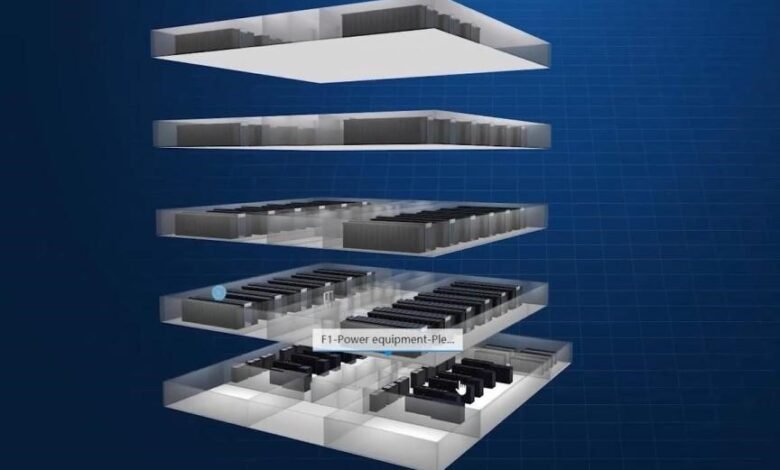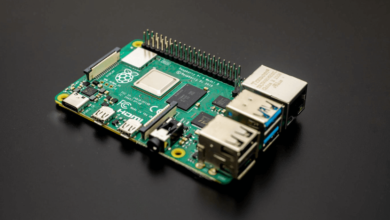What Are the Key Features of Modern DCIM Tools?

Modern data centers need accuracy, agility, and visibility. Here is where DCIM tools come into play. These systems provide a consolidated platform for monitoring, managing, and optimizing the physical infrastructure. Unlike typical monitoring software, DCIM combines IT and facilities data to offer a comprehensive picture of operations. With enterprises embracing hybrid cloud, edge computing, and colocation solutions, the need for unified administration is increasing rapidly. DCIM maintains reliability, lowers energy costs, and enables managers to make educated choices. The transition from manual operations to data-driven management has made these technologies necessary. As digital transformation increases, knowing what distinguishes current DCIM solutions is critical for organizations seeking to remain competitive and assure infrastructure resilience.
Why Are DCIM Tools Essential in Modern Data Centers?
Rising Complexity in Hybrid and Edge Environments
As data center architectures go beyond centralized facilities, controlling assets in hybrid and edge settings becomes more difficult. Traditional approaches cannot keep up with the scattered infrastructure and diverse equipment. DCIM helps to consolidate visibility and control, making it simpler to manage several locations via a single interface. It monitors assets, environmental data, and capacity utilization in real-time, enabling IT teams to respond rapidly. Whether it’s a tiny edge node or a massive corporate data center, DCIM simplifies monitoring and ensures consistent operations. This consolidated strategy lowers downtime risks and increases performance across several sites. In these increasingly complex contexts, organizations improve their understanding of capacity planning, equipment lifecycle management, and overall infrastructure health.
Need for Real-Time Monitoring and Efficiency
Fast decision-making requires precise, up-to-date data. DCIM provides real-time insights into power consumption, cooling efficiency, and asset performance. Operators can detect hotspots, monitor changes, and rectify problems before they create disruptions. Users can continually monitor physical infrastructure thanks to the system’s integration of sensors and intelligent devices. This degree of information increases operational efficiency by eliminating waste and highlighting areas for improvement. Teams react quicker to anomalies, manage capacity proactively, and achieve performance objectives. Instead of reactive maintenance, firms are shifting to predictive management. By simplifying operations and automating notifications, DCIM enables any data center operator to achieve real-time efficiency.
See also: Drain Cleaning in Queen Ediths – Solutions for Your Drainage Needs
Compliance, Security, and Audit Readiness
Regulatory compliance is needed in banking, healthcare, and government businesses. DCIM tools aid in policy enforcement, access tracking, and the preservation of auditable documents. These solutions track every modification, access event, and maintenance work, making it simpler to fulfill internal and external compliance requirements. Role-based access controls restrict who may execute certain activities, lowering the likelihood of illegal modifications. By connecting with security systems, DCIM improves physical protection. It informs administrators of unusual behaviors or circumstances that may jeopardize uptime or data integrity. When auditors require proof, administrators may provide correct reports immediately. In this approach, DCIM not only supports security and compliance but also streamlines the audit process.

How Do DCIM Tools Support Automation and Integration?
API Support and Integration with ITSM Tools
Modern DCIM products include powerful APIs that enable easy integration with IT Service Management (ITSM) platforms such as ServiceNow or BMC. These interfaces allow for smooth data flow across systems, which improves coordination and reduces human input. For example, a ticket generated in an ITSM tool may trigger automatic inspections in the DCIM platform. This avoids delays and ensures that the appropriate teams respond to issues swiftly. APIs also provide custom dashboards, which enable businesses to personalize displays depending on roles or priorities. By linking asset data, maintenance logs, and performance measurements, DCIM becomes an important component of the larger IT ecosystem. These linkages not only increase workflow efficiency but also provide teams with a single source of truth for decision-making.
Automation of Workflows and Maintenance Tasks
Repeated tasks might waste valuable time and result in human error. This is resolved by DCIM, which automates routine processes, including capacity forecasting, environmental monitoring, and equipment supply. For instance, the system may instantly update inventory and adjust power and cooling estimates upon the installation of a new server. Time intervals or performance criteria may also be used to automate maintenance programs. The software incorporates notifications and escalations to make sure that no jobs are overlooked. IT workers may focus on strategic initiatives instead of routine monitoring thanks to this automation, which also speeds up response times. Lastly, by lowering human interaction and guaranteeing regular, timely maintenance, DCIM increases uptime and lowers operational costs.
Scalability and Support for Multi-Tenant Environments
Data centers that serve numerous customers need solutions that can expand with demand while respecting tenant boundaries. DCIM systems are designed to manage such complexity. They provide multi-tenant functionality, enabling administrators to operate segregated environments on the same infrastructure. Each tenant has access to just their allotted assets and performance data, ensuring privacy and security. The system may grow horizontally to accommodate hundreds or thousands of assets in several locations while maintaining performance. As enterprises expand or acquire new customers, the DCIM platform expands with them. Tenant-specific dashboards help to simplify reporting, invoicing, and resource allocation. This flexibility enables both business and colocation providers to deliver dependable, transparent service while maintaining control.
Conclusion
Modern DCIM tools are essential for data centers navigating complexity, compliance, and performance demands. These platforms provide real-time visibility, automated vital tasks, and seamless integration with other systems. By solving difficulties in hybrid, edge, and multi-tenant settings, DCIM assists enterprises in being nimble and efficient. With strong support for APIs, automation, and scalable design, these technologies enable teams to transition from reactive to proactive management. They boost security, make auditing easier, and provide better service overall. Investing in a competent DCIM solution is no longer an option for firms looking to optimize their digital infrastructure; it is a strategic decision. Understanding the essential aspects listed here will assist decision-makers in selecting the appropriate platform to promote long-term development and resilience.





